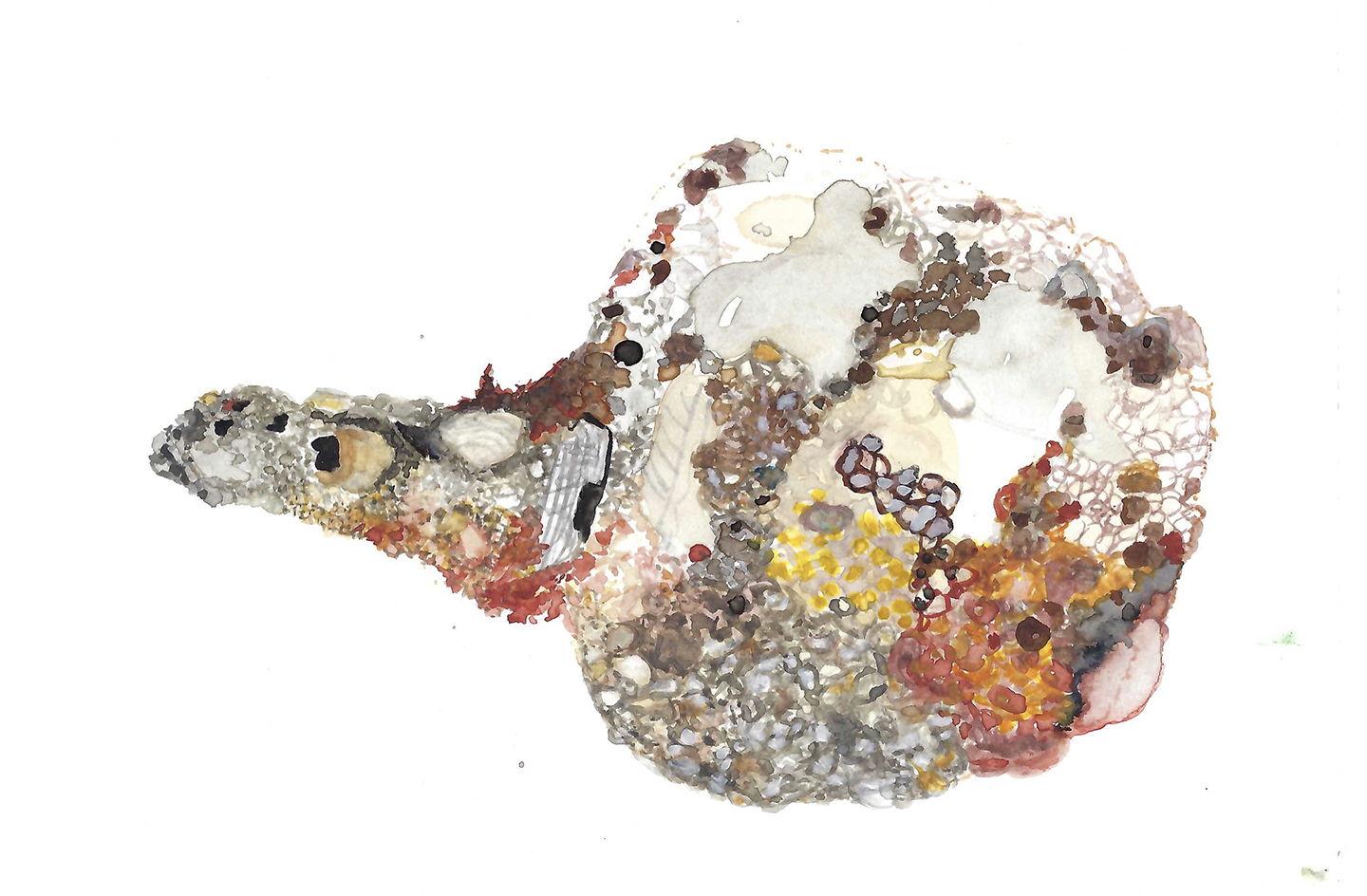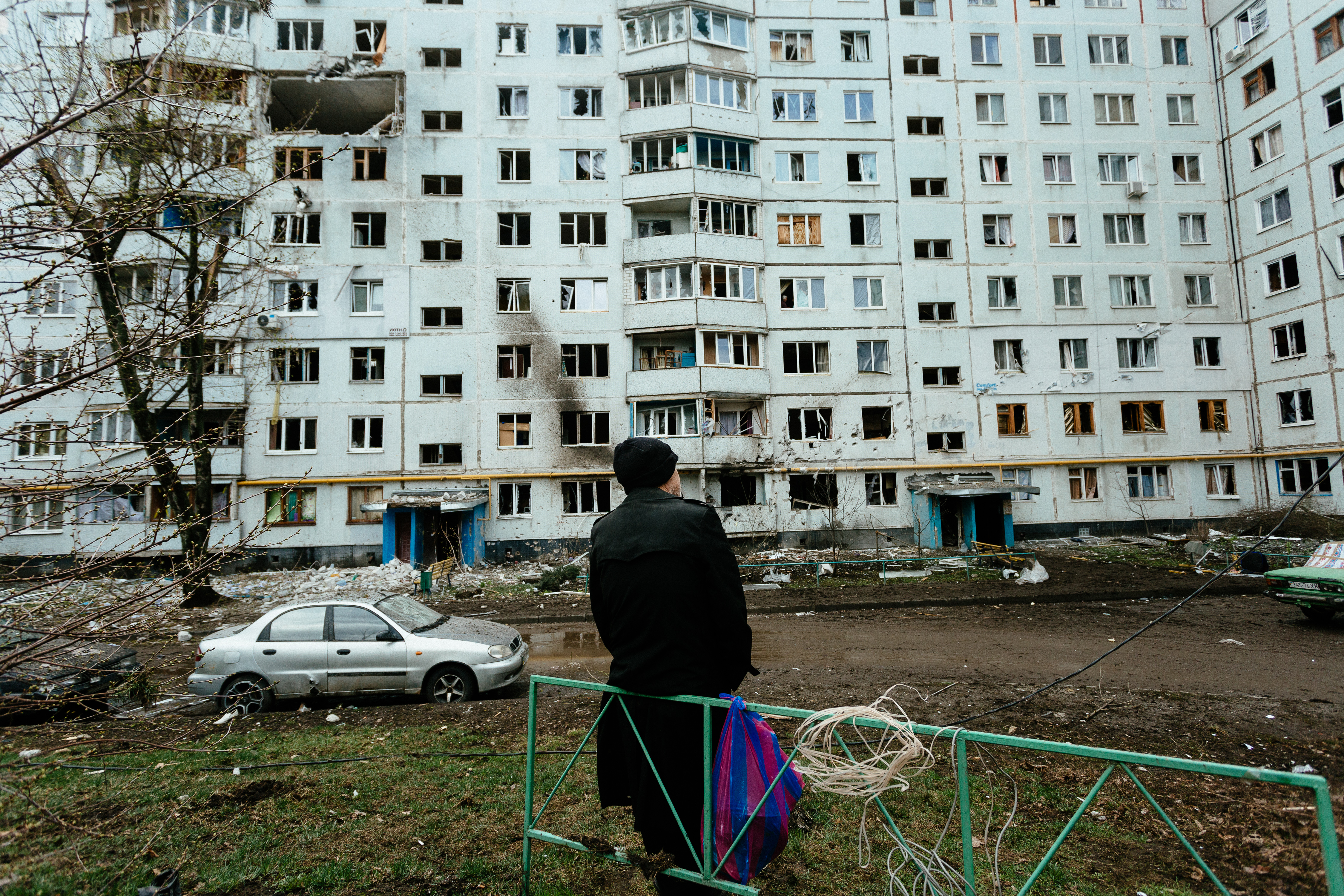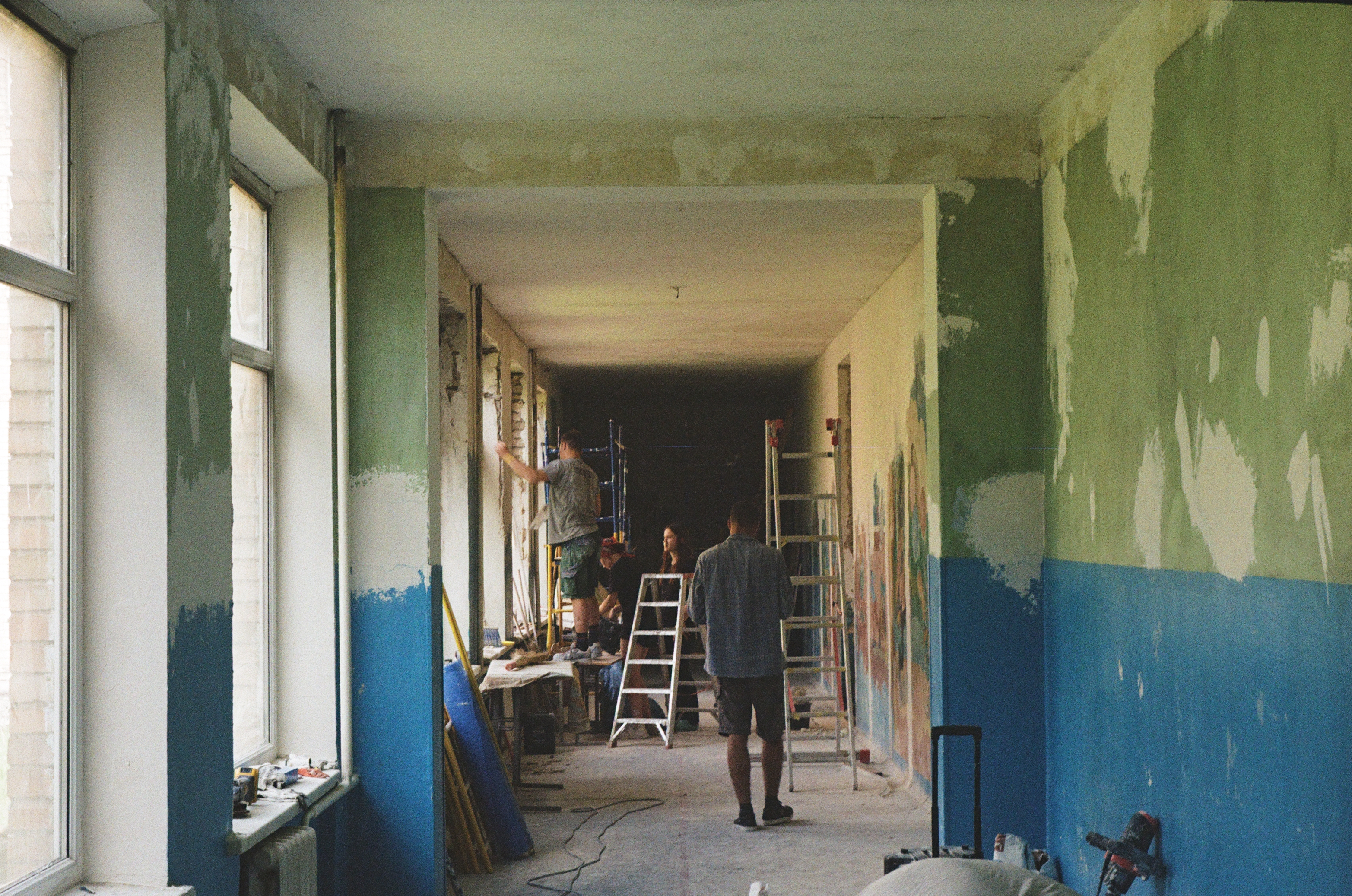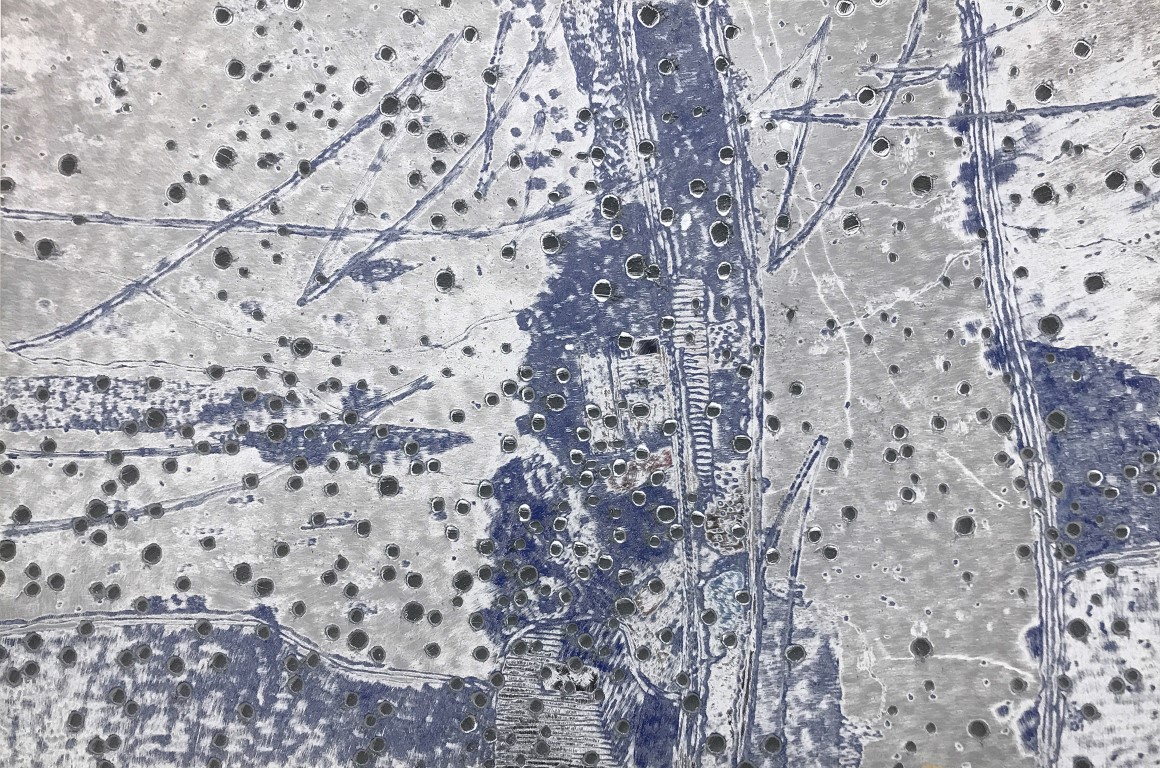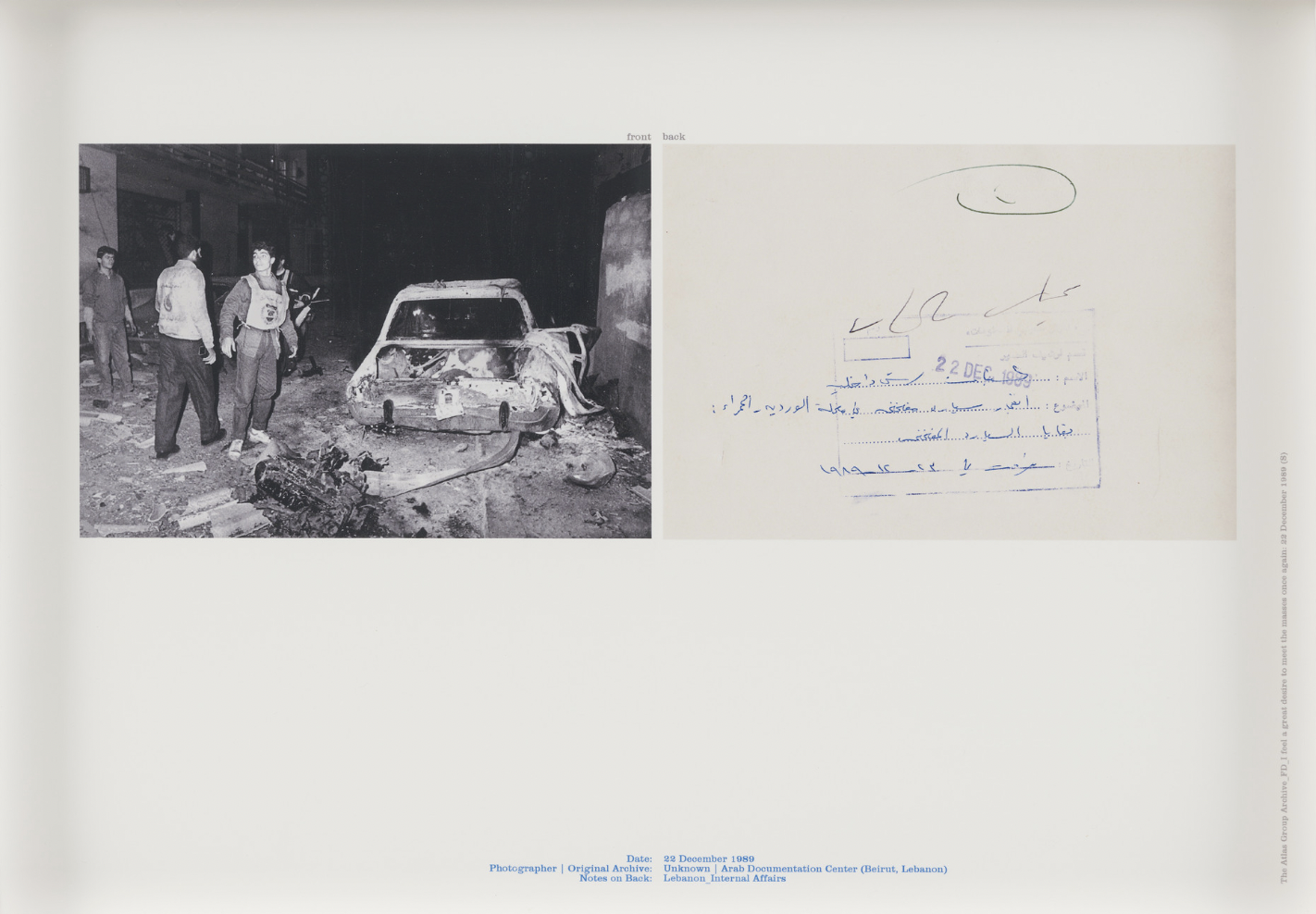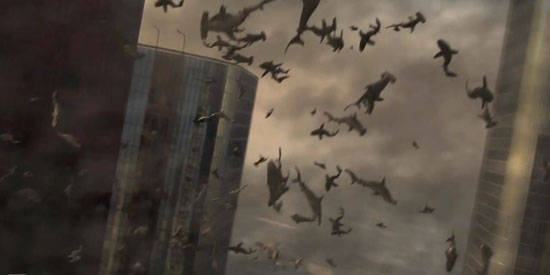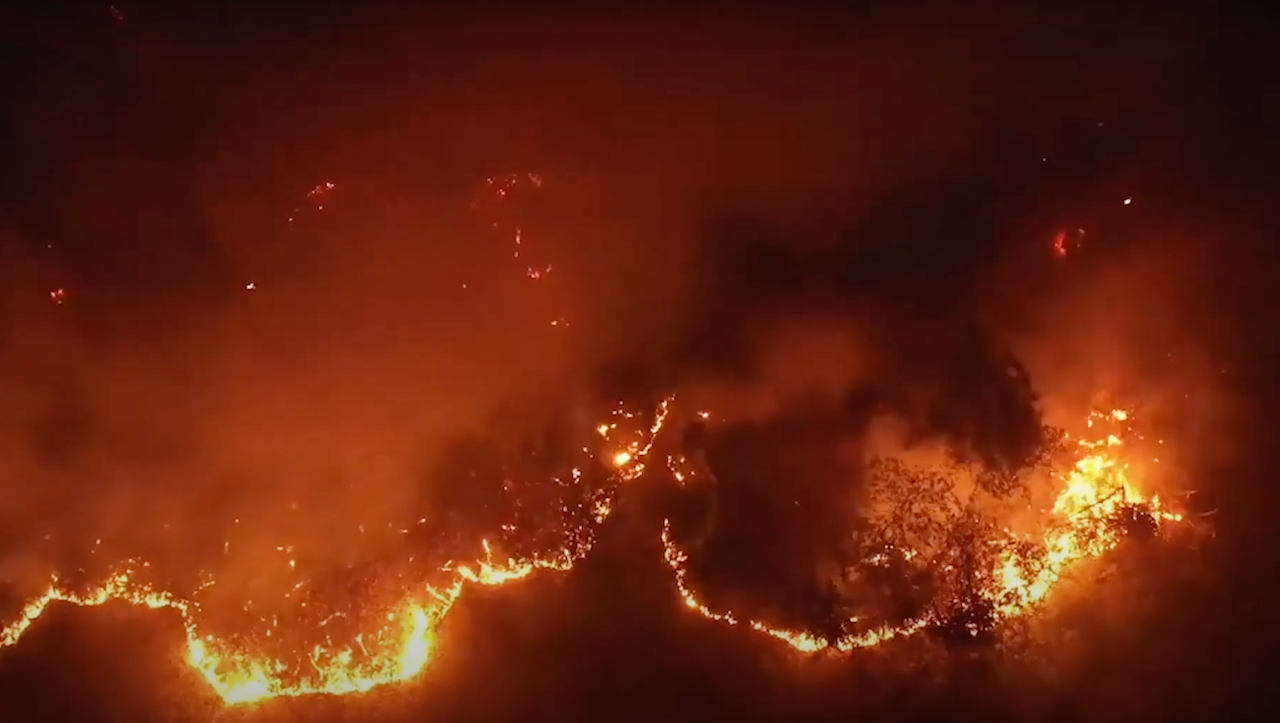
Film still from Luisa Marques and Gabriel Tupinambá, Distância, escala, resolução (Distance, Scale, Resolution), 2020.
1.
In a fragment from 1922, Walter Benjamin writes: “Nearness and distance are two factors that may be as important for the structure and life of the body as other spatial categories (up and down, right and left, etc).” In the same fragment, the interplay of nearness and distance is also said to determine analytical abilities and intelligence: “There is a precise relationship between nearness and stupidity: stupidity stems ultimately from too close a scrutiny of ideas.”1 Seven years later, in 1929, Benjamin takes up the dialectic of distance again to explain the art of recollecting images and spaces, on which a good traveler depends: “The great art of making things seem closer together. In reality. Or from where we are standing; in memory … This is the mysterious power of memory: the power to generate nearness.”2
In 1935, the problem of distance appears in Benjamin’s definition of one of the key concepts of his work—aura. This is how he defines it: “What, then, is the aura? A strange tissue of space and time: the unique apparition of a distance, however near it may be.”3 In this same text, the dialectic of distance is mobilized to differentiate two forms of image production, which are also linked to the difference between totality and fragment:
Magician is to surgeon as painter is to cinematographer. The painter maintains in his work a natural distance from reality, whereas the cinematographer penetrates deeply into its tissue. The images obtained by each differ enormously. The painter’s is a total image, whereas that of the cinematographer is piecemeal, its manifold parts being assembled according to a new law.4
These comparisons are curious. They might however throw new light on another well-known passage of Benjamin’s from 1940, where he describes the angel of history as a creature who wants to “turn away from something that stares at him fixedly.” The passage goes:
His face is turned toward the past. Where a chain of events appears before us, he sees one single catastrophe, which keeps piling wreckage upon wreckage and hurls it at his feet. The angel would like to stay, awaken the dead, and make whole what has been smashed. But a storm is blowing from Paradise and has got caught in his wings; it is so strong that the angel can no longer close them.5
The angel of history observes history as a single catastrophic panorama; he is a painter. For us, who cannot take a distance from these ruins, history is “composed of innumerable fragments”; for us, history is a problem of editing and composition.
2.
In Benjamin’s work, technique and language come into conflict with space-time itself: technique, driving the contraction and dilation of cities through the force of technical development; language, giving rise to the memory of the traveler, who finds an intimate measure for the spaces he wanders through. On the one side, the industrial objects that accumulate until they no longer fit in shop windows, museums, art exhibitions, or even within our experience. On the other, a language common to both man and things, the promise of a fabric capable of expanding the world without disconnecting its fragments. On the one side, the dead labor that takes revenge on the living. On the other, the dead letter that can always be revived.
Movements of fraying and sewing together, figures of incommensurability and communication—it is no wonder that the battleground of these tensions is always spatialized. In 1916, Benjamin characterized language itself as a territory. “It is fundamental,” he writes, “that this mental being communicates itself in language but not through language.” And even: “Languages, therefore, have no speakers, if this means someone who communicates through these languages.”6 Perhaps, for Benjamin, language was the first city.
However, the conflict over time and space is here more erotic than political, as the “raw material” of action is effectively the variation of distances: in the dialectical image, in Proustian memory, in toys and games, in magic, in flanerie, and in historical sensibility itself—caught between “the history of the organic life of the earth” and the “time of the Now.”7 The qualitative, eroticized distance of language is here a response to the quantitative and limitless distance of technique.
This opposition is nevertheless not a stable one, as quantitative variations can themselves lead to new qualitative transformations—and technical transformations can even call into question the very oscillation between distance and proximity. As Gilbert Simondon wrote in 1970:
We can speak of simple technique when mediation is established between two terms that are of the same order of magnitude—like a pulley and a block of stone. When the chain of mediations lengthens, it can establish an effective action between two types of reality, two realms, of different orders of magnitude. Of all the aspects that make up the transductive character of technology, the one that allows interaction between orders of magnitude is undoubtedly the most important.8
In a way, the threshold between technique and technology is also the border that separates erotics from politics: on the one hand, the distance between bodies that share the same order of magnitude, whose forms inhabit the same reality; on the other, the incommensurable distance where the superposition of bodies could very well be total and yet they never touch. The traveler enters and leaves the city, the lover desires and hates their beloved, the child pushes away and then pulls back their toy—but the molecules of water are not in the water, Parisians cannot touch France, and the natural history of destruction is not available for individuals to narrate.
Quantitative distance contains within itself a qualitative transformation; the dialectic of proximity and distance is, beyond the confines of our time and space, a dialectic of scales and resolutions. And if technology exploits the power of diffractions between orders of magnitude, language remains like the chronicler whom Benjamin praises for narrating “events without distinguishing between the large and the small.”9 The wounds caused by the mismatch of magnitudes cannot be figured by either the language of men or of things.
3.
Imagine a line segment.
Now choose a unit—a fragment of this line—that we will use to cover the whole segment. You can call this small part a metric unit, but you can also call it a resolution—like when we divide an image into pixels. A smaller unit will divide the line into more pieces, a larger one will divide it into fewer pieces—fewer pixels, with a lower resolution.
Imagine we chose a part of length two. Now we cover the line with multiples of that unit. We need, say, five parts to cover everything. Five times two: the line is of size ten. Now imagine that we choose a smaller part, half of the previous one, a part of length one. We now need ten parts to cover the whole line. But ten times one is the same as five times two. The two measurements we have chosen converge on the same measure of space.
Let’s now imagine a coastline. How big is it? Let’s repeat our previous procedure. We choose a metric unit. Let’s break down the coastline into kilometers. You can imagine a car that drives along the coastline, along the road that runs near the sea. At the end of the journey, the driver records how far they have traveled. Let’s say that this car has traveled one hundred kilometers.
But let’s now choose another resolution: not kilometers, but meters. You can imagine someone lost in thought, walking by the shoreline, very close to the water, each step always one meter apart from the last. They stay close to the shore in a way that the road cannot. They walk along the recesses and protuberances of the coastline, following the curvature of the bay and the prominence of the peninsula. At the end of their journey, the wanderer has not walked one hundred thousand meters—that is, one hundred kilometers—but 150,000 meters.
Now let’s imagine a creature that is only one millimeter in size and whose habitat is the narrowest possible threshold between land and sea. This creature takes the same journey as the driver and the wanderer along the coast, but it makes no sense to say that it is the same path—since our creature does not inhabit the same world as they do. In its world, for example, there is no sand; there are only small and large nuggets of silicon, each of a different and unique size. The creature makes this journey following the sea shore with extreme precision, strolling through all the irregularities of the coastline: entering the holes within holes in the rocks, exploring the bays within bays within bays. The length of its journey does not approach the wanderer’s 150 kilometers—150 million millimeters—but tends toward infinity: the smaller our creature, the more the size of the coastline tends to infinity.10
4.
“Conspiracy, one is tempted to say, is the poor person’s cognitive mapping in the postmodern age,” says Fredric Jameson.11 But what kind of poverty is he talking about? It is the “new poverty” that Benjamin spoke of when he recalled the silent soldiers returning from the trenches of war, from the boundary between life and death.
Benjamin, in 1933, recognized the emergence of this new kind of poverty:
This much is clear: experience has fallen in value, amid a generation which from 1914 to 1918 had to experience some of the most monstrous events in the history of the world. Perhaps this is less remarkable than it appears. Wasn’t it noticed at the time how many people returned from the front in silence? Not richer but poorer in communicable experience? And what poured out from the flood of war books ten years later was anything but the experience that passes from mouth to ear. No, there was nothing remarkable about that. For never has experience been contradicted more thoroughly: strategic experience has been contravened by positional warfare; economic experience, by the inflation; physical experience, by hunger; moral experiences, by the ruling powers. A generation that had gone to school in horse-drawn streetcars now stood in the open air, amid a landscape in which nothing was the same except the clouds and, at its center, in a force field of destructive torrents and explosions, the tiny, fragile human body. With this tremendous development of technology, a completely new poverty has descended on mankind.12
The “monstrous development of technique,” emblematic for Benjamin of the decoupling of “cultural heritage” and experience, is not only a technical development but the transformation of technique into something else, into war technology. The First World War is also the first war in which the resolution of the world seen from the standpoint of a military bomber aircraft does not converge with that of the bombed soldier.
For Benjamin, who situates distances between the poles of technique and language, the main symptom of the clash between different orders of magnitude is a lack of communicable experience. It is with bitter honesty that he concludes his text with a sort of praise of this new poverty—since the thing that’s lacking is a common measure, which can never be recovered.
It is interesting to return, in this light, to Freud’s comments on the neurosis of war trauma. In 1921 he writes: “A condition has long been known and described which occurs after severe mechanical concussions, railway disasters, and other accidents involving a risk to life; it has been given the name of ‘traumatic neurosis.’”13
For Freud, traumatic neurosis involves the clash between technique and the body. He continues: “The terrible war which has just ended has given rise to a large number of diseases of this kind; at least, however, it has put an end to the temptation to attribute the cause of the disturbance to organic lesions of the nervous system, brought about by mechanical force.”14 As with Benjamin, for Freud the war was exemplary insofar as it clarified something. But for Freud, it is not the causal relationship between technique, horror, and trauma but the point of mismatch between the nervous system and war technology. After the First World War, trauma could no longer be reduced to the clash between two bodies that shared the same reality.
Freud then identifies the two most common features of traumatic neurosis: “The first, that the main burden of causation seems to rest on the factor of surprise, of fright, and, the second, that an injury or damage inflicted simultaneously operates, as a rule, against the development of a neurosis.”15
It could not be more counterintuitive: the cause of neurosis is the intrusion or emergence of an unpredictable danger, but if that danger leaves a mark on the body—an injury or wound—neurosis does not normally develop.
War trauma has the structure of the interaction between different scales. Its force is proportional to our inability to simultaneously locate the space of causes and the space of effects. And a wound on the body can function as a way of seizing this other incommunicable reality, giving it some contours. Freud had realized that a wound can be a form of wealth.
5.
“In the treatment of the individual, neurosis is presented as a problem of the individual. In the treatment of a group it must appear as a problem of the group.”16 This is how Wilfred Bion and John Rickman introduce their pioneering experiment carried out at the Northfield Military Hospital in Birmingham, England at the end of the Second World War, when they had three or four hundred soldiers under their care.
“Appearing as a group problem,” however, does not mean gathering neurotic soldiers in a group, nor using a group to dramatize or reproduce the neuroses of an individual. Rather, it was about finding the appropriate measure of the trauma—its resolution.
In his 1943 report, Bion recounts that, upon arriving at the hospital, he was bombarded by diverse demands from the hospitalized soldiers—questions, requests, and problems that, at first glance, to a British army officer like himself, seemed more like matters of military discipline than medical or psychiatric emergencies. Feeling called upon by the soldiers to intervene as a battalion leader, but at the same time recognizing the strangeness of these demands, Bion encouraged the soldiers to organize among themselves in small groups and find their own solutions. Some patients had complained about the lack of entertainment; these patients then organized games and dance classes. Others were insecure about the lack of job prospects after the war; these patients organized groups to teach each other new skills.
But Bion realized that, regardless of each soldier’s individual reasons for participating in a group, and regardless of the specific goal of each group, certain organizational dynamics and impasses recurred. The groups were confronted with problems of authority, deliberation, and the division of labor—problems that did not emerge from their immediate environment or from an external command, but from within the group itself, reproducing in the artificial environment of the hospital situations and relationships that had surprised the soldiers on the battlefield, without leaving any trace on their individual bodies.
The groups were able to make the reality of the war present to the soldiers. Mapping social space in another resolution, whose metric was the organization itself, and not the organized, the soldiers appeared as part of a body marked by the history of the army and its battles.
This change of scale could perhaps give a new meaning to Kafka’s famous response to Max Brod, which Walter Benjamin was so fond of. When asked if “there is hope outside the world as we know it,” Kafka replied, “Yes, there is infinite hope—just not for us.” That is: infinite, just not in our measure.
This essay was also featured in a short film of the same title, available with English subtitles here →.
Walter Benjamin, Selected Writings, vol. 1, 1913–1926, ed. Marcus Bullock and Michael W. Jennings (Belknap Press, 2002), 358.
Walter Benjamin, Selected Writings, vol. 2, part 1, 1927–1930, ed. Michael W. Jennings, Howard Eiland, and Gary Smith (Belknap Press, 2005), 248.
Walter Benjamin, Selected Writings, vol. 3, 1935–1938, ed. Howard Eiland and Michael W. Jennings (Belknap Press, 2006), 104.
Benjamin, Selected Writings, vol. 3, 116.
Walter Benjamin, Selected Writings, vol. 4, 1938–1940, ed. Howard Eiland and Michael W. Jennings (Belknap Press, 2006), 392.
Benjamin, Selected Writings, vol. 1, 63.
Benjamin, Selected Writings, vol. 4, 396.
Gilbert Simondon, “Naissance de la technologie” (1970), in Sur La Technique (Presses Universitaires de France, 2014). My translation.
Benjamin, Selected Writings, vol. 4, 394.
For an introduction to fractal dimensions, infinite lengths, and scalability see Fractal Explorer →.
Fredric Jameson, “Cognitive Mapping,” in Marxism and the Interpretation of Culture, ed. Cary Nelson and Lawrence Grossberg (University of Illinois Press, 1990), 357.
Benjamin, Selected Writings, vol 2, part 2, 732.
Sigmund Freud, Beyond the Pleasure Principle, trans. James Strachey (Dover, 2015), 6.
Freud, Beyond the Pleasure Principle, 6.
Freud, Beyond the Pleasure Principle, 6.
Wilfred Bion and John Rickman, “Intra-group Tensions in Therapy; Their Study as the Task of the Group,” The Lancet, no. 242 (1943).
